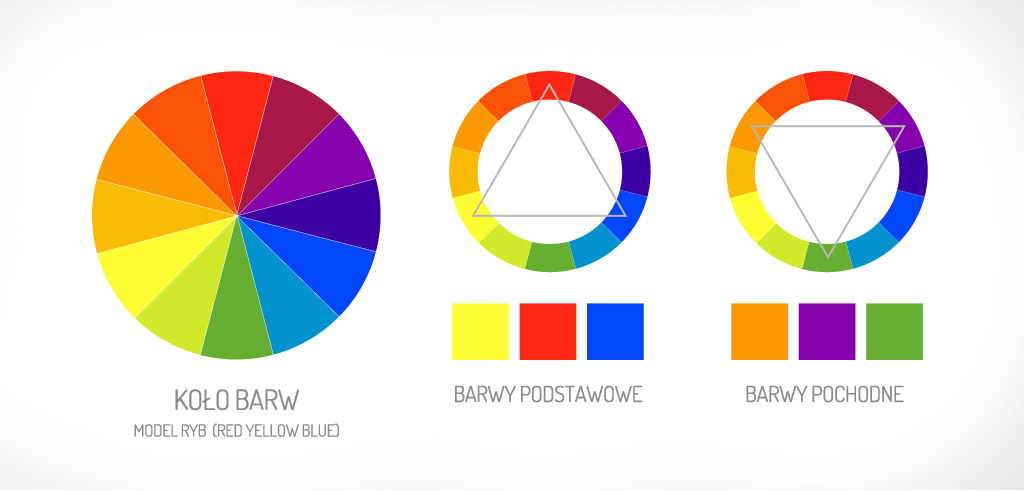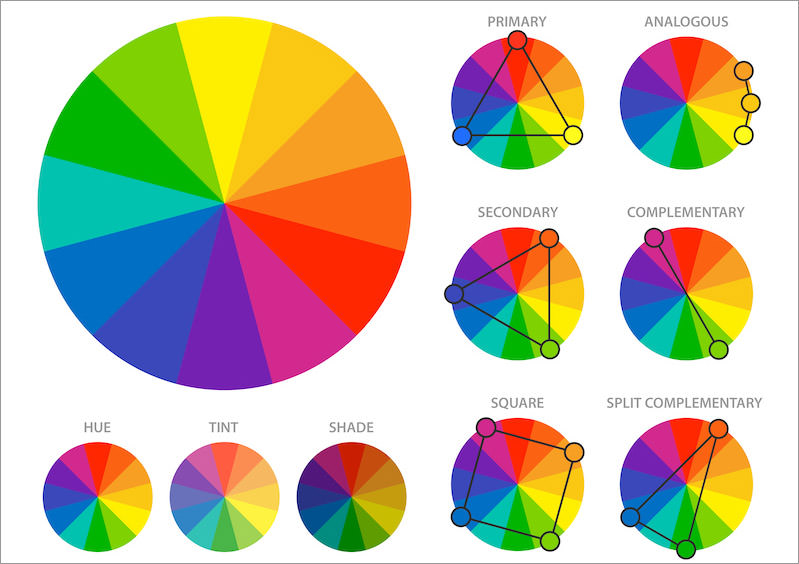

02 Nov Color theory and the color wheel ARD 514/516
Thanks to the practical combination of science and art, the theory of colors was created. Its job is to identify which colors look good together and are the perfect combination. It determines how the color affects a person, what emotions it evokes in him, how to combine colors so that the image/photo/film / graphic design looks attractive to the human eye.
Color theory and the traditional color wheel that functions in the art world were developed by Isaac Newton in 1666. He conducted an experiment based on the diffraction of light through a prism. Thanks to this, he appointed the so-called primary colors and the relationships between them. The color wheel also determines how colors are created by mixing them.
The primary colors are red, yellow, and blue (red, yellow, blue – FISH). Derivative, second-order colors were created from the combination of primary colors: yellow and red give orange, red and blue give violet, blue, and yellow give green. Mixing the colors of the processions together gives the colors of the third order.


In the RGB (red, green, blue) model, red, green, and blue are used as primary colors. Mixing them produces yellow, cyan, and magenta. The RGB model is called the additive model and these colors are used in monitors and other color displays.
The CMYK model recognizes magenta, cyan, and yellow as the primary colors. Their mixing in subtractive synthesis produces red, blue, and green. CMYK colors are used in printing and refer to pigments.
What is color anyway? We talk about colors in everyday life quite intuitively. We distinguish between cold and warm colors, earth tones, colors of autumn, spring, etc. Color and hue used as a synonym in colloquial language. And that’s ok for the average person. Color is the general term we use to describe every shade, tone, the color we see. Black, white, and gray is also referred to as color, although they are not in the light spectrum. However, if someone works in photography, graphics, or printing, he uses the term color to say that something is blue or green.
Color is perception. Our eyes see something (e.g. the sky) and our brain interprets it as a specific blue color. It just so happens that what we see is not what we look at, but only an image that arises in our brain. Objects reflect light in various combinations of wavelengths. In the retina of our eye, there are rods that read the amount of light (light-dark) and cones – which respond to the wavelength of light. Thanks to them, our eye reads the wavelength and translates it into colors. Importantly, everyone sees colors differently, so not everyone looks the same red.
Hue is defined as a combination of several parameters: hue (H-hue) – color *, value; saturation (S-saturation); and brightness (L-luminance). What gives us the abbreviation HSL **
hue refers to the primary color in the light spectrum without the addition of white and black which, when added together, create tones. This can also be referred to as a color family. Imagine a box with tubes of red paint in different shades: crimson, burgundy, scarlet, etc. They all have a common denominator, although they will differ in shade – we will say generally that they are red. Interestingly, since hue refers to the color wheel of the light spectrum, white, black, or gray, even though they are called a color, are not a shade.
Man perceives electromagnetic radiation with a wavelength from about 400 to 700 nanometers (1 nm = 10-9 m = 0.000001 mm); 400 nm is a violet color, 700 – red with a cherry shade.
As you can see, what we are able to register with our sense of sight occupies a very narrow area of electromagnetic radiation. They can see a little more snakes – the rattlesnake has a special organ that allows it to receive infrared (thermal) radiation, thanks to which it can hunt unexpected mice even in the deep night – but not a cold-blooded frog or lizard. In turn, some insects, incl. bees can see ultraviolet light – they are even able to determine the direction of light polarization, which makes it easier for them to find their way back to the hive.
From the above, it appears that our sense of sight is not so perfect – and this is just the beginning, the worst is yet to come! Well, let’s be honest that all the methods of color reproduction currently used, whether it be printing or television, or a computer monitor, or finally photography, are pure deception – we do not really reproduce color, i.e. a light wave of a certain length, but only an IMPRESSION of color!
If you pick up a magnifying glass and hold it close to your TV screen or monitor, you will see that all the colors you normally see are replaced by only three: red, green, and blue.


Sorry, the comment form is closed at this time.